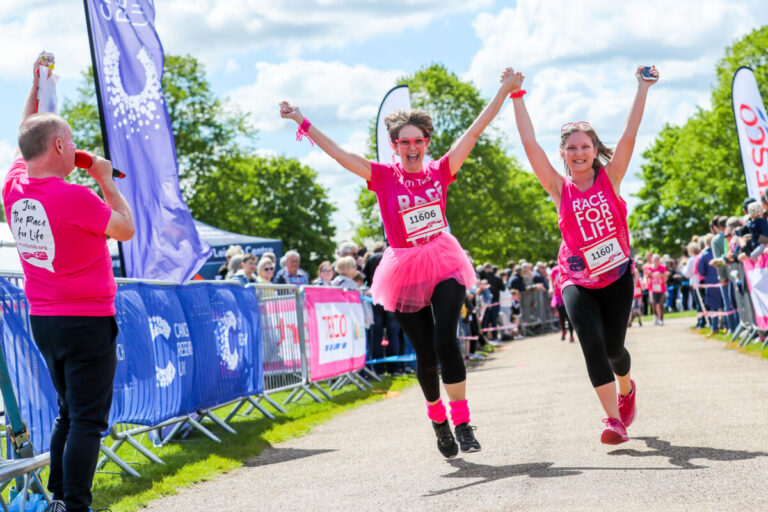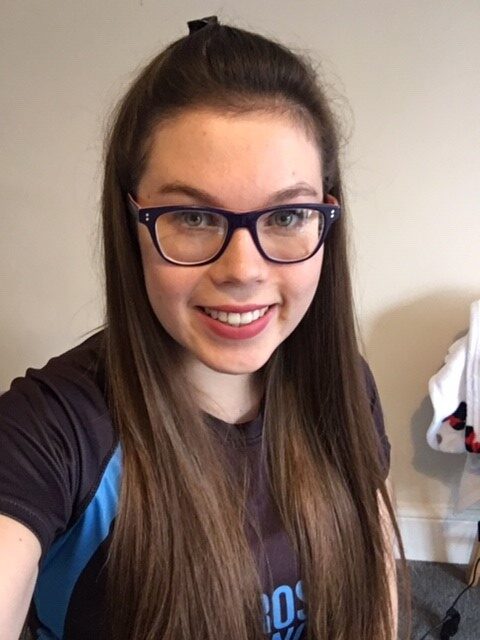Charity tips for running a successful fundraising event

Six charity experts give their top tips for ensuring your fundraising events are a success, covering everything from how to encourage sign ups and fundraising, to what makes a good pack, and how to keep participant motivation high.
Advertisement

Rebecca Highfield, Senior Events Manager at Breast Cancer Now
Encouraging fundraising
We recommend setting up online fundraising pages early with our supporters. With the London Marathon for example we start talking to participants about fundraising at point of sign up because that’s when they’re keenest, and the earlier somebody starts to fundraise the easier they find it. Giving them fundraising tips and ideas that make reaching their target achievable also helps. For example, the pandemic meant people were unable to fundraise in the same way and so it was about providing ideas for what they could do, like donating the amount they’d usually spend commuting to the office, or on a coffee.
Incentives
Depending on the event, incentives can be a helpful tool for boosting engagement and motivating fundraising. The pandemic saw us pivot to do some virtual fundraising events such as our Walk 300,000 Steps in June – with these events we offered a t-shirt for getting their first donation and then if they hit a certain fundraising target, they got something else, such as a running vest. There are additional benefits with this kind of incentive too in that they help the supporter feel like they’re part of something, and they’re also great for your charity in terms of getting your brand out there.
Fundraising packs:
My biggest tip for fundraising packs is to get them out to people as quickly as possible – ideally at sign up or as soon as possible afterwards. At this point, the challenge is fresh in the participant’s mind and they want to hear from you with information that will help them.
Audiences & marketing
Know your audience. Somebody who is likely to run the London Marathon will probably be very different to somebody who’ll take on a 10k, so it’s really important to know who your event will appeal to, and to go out to that audience. One of the most successful ways of marketing events is through word of mouth and the key to that is just making sure people get a really good experience from the event and from the support that the charity offers them. Then they’re not only more likely to come back themselves, but to encourage their friends and family to do it.

Claire Natolie, Senior Marketing Manager at Cancer Research UK
It’s really important to maintain a good relationship with your volunteers and fundraisers. They are the lifeblood of any charity. Loyalty email journeys are a great way to keep users engaged throughout their involvement with you while fundraising packs, and shareable milestone badges also perform well and are proven to increase engagement. By sharing fundraising materials and tips you can deliver clear direction for someone’s involvement, while nurturing their initial interest.
What to include in your fundraising pack depends on the type of event you are running, but a detailed guide, training plan (if it’s a sports event), list of fundraising tips, posters to get the word out, totalisers, sweepstakes and certificates are a good place to start.
Beginning to fundraise is daunting, which is why it’s a good suggestion to get people to kickstart it with a donation to themselves to show commitment. Then they can boost donations with a bake sale or quiz night for example. Beyond family and friends, they can also ask their employer if they can match funds raised. To encourage them to reach their fundraising targets you can suggest they promote their activities or event online, perhaps sharing on their personal social media channels.
Facebook is a great platform for charities to reach potential audiences. You can target broadly or aim to reach specific groups, and Facebook algorithms offer the opportunity to optimise for best performance. They also offer a fundraising platform, or you can direct supporters to sign up to your inhouse fundraising platform.
Finally, to ensure that your supporters remain engaged, it’s important to monitor their user journey. If you’re not capturing data, it makes it increasingly difficult to keep track of the people fundraising for you. Prompt supporters to sign up via your website using a form which captures their data within your CRM system or via a lead generation ad form such as Facebook. This will enable you to keep track of what you’ve already shared with them and what communication you’ve had with them in the past.

Emily Martin, Senior Fundraising Manager at Great Ormond Street Hospital Children’s Charity (GOSH Charity)
Keep fundraising simple
Always aim to make signing up as easy and seamless as possible. One of our most successful virtual fundraising events was our Run 31k in July Challenge. It worked because it was a simple challenge, where people could register, set up a fundraising page and build their community all on one platform: Facebook. The event raised £687,000 in just two months. If you can’t host everything on one platform, try to use clear and consistent wording across all channels and avoid duplicating questions.
Let your supporters know how much they mean to you and find the best way to tell them We ask our fundraisers to spend time and energy supporting our charity, so we need to make sure they know how important they are to us. We work closely with families and staff at Great Ormond Street Hospital (GOSH) to provide up-to-date stories that show how much of an impact their efforts have on seriously ill children from across the UK. Stewardship emails and fundraising packs can help with the ‘drumbeat’ engagement needed to keep fundraisers engaged with the cause. But sharing those stories across paid and organic social media and press can be a great way to recruit new sign-ups and allow participants to share with their networks and help drive donations.
Look after your fundraisers from beginning to end, and after that
It’s really important to create a fun, motivational and supportive experience for fundraisers, particularly when events have been postponed due to Covid-19 restrictions. Like most charities we stewarded our Team GOSH London Marathon participants for over two years. We always kept in contact with our runners to ensure they deferred their entries and stayed motivated to fundraise. In the weeks leading up to the rescheduled event we called and emailed them, and interacted regularly in a Facebook group, to make sure they felt safe and supported, whether they were taking part virtually or in Greenwich Park. Thanks to their dedication and commitment, London Marathon 2021 was our most successful yet, raising over £800,000 for GOSH Charity.

Jenny Peat, Head of Community and Events at Sense
At Sense, activating and engaging with our supporters is a really key part of how we operate. We have focused on the stewardship journey for our supporters over the past few years to see what works in different settings. We value one-to-one conversations and have found that this pays off in the longer term. For our core events, we operate an application system where participants register online and we then call them to talk about their plans and motivations for fundraising. This sets a really great foundation and allows us to understand our team more deeply.
Throughout the supporter journey, we use a variety of methods to get in touch with our supporters. We regularly use email as our core way to get in touch and maintain contact but then supplement this with phone calls, social media and text messages. We have found that texts get a great response, particularly for things that we need an immediate response to, such as getting registered on an organiser’s registration platform.
We also call all of our supporters six weeks before the event to check in with them. This is a time consuming task, especially with hundreds of supporters, but we bring the whole team together to be able to have these conversations and make the supporter feel valued. Even leaving a voicemail can achieve the same goal! We are starting to experiment more with new technologies including online leader boards and virtual events which work well for particular audiences – especially corporate or large groups.
We are so grateful for all the supporters who take part in fundraising events for Sense, bringing us closer to our goal that no one, no matter how complex their disabilities, should be left out of life, isolated or unable to fulfil their potential.

Karen McDonnell, Senior Product Delivery and Marketing Manager at the British Heart Foundation
Best ways to incentivise fundraising
One of the best ways to incentivise fundraising is to use first person stories, these are so powerful and help build a connection with the cause. It’s also useful to use personalised stats such as you’re x% away from your fundraising target. People often set up their pages but then don’t utilise them fully. To overcome this, charities can guide them through the process with a step-by-step guide, and examples of ‘best in class’ pages.
Best fundraising packs
There is a higher demand for fundraising packs to be digital for both a sustainability reason and also cost saving for the charity. The best things to include within the pack are assets that can make raising money easy and that people can print out and take to their office or sports group such as sweepstake forms, and ‘empty belly’ posters where people can promote their challenges and online giving page. We still get asked for sponsor forms but increasingly they’re digital now and viewable on all devices.
Capturing participants’ data
Make capturing data quick and easy. Only collect data that you will make use of. There’s no need to ask for everything and put people off filling in the form if you’re not going to use the data. Making sure participants know what they are agreeing to/signing up for when you ask for data is essential.
Getting participants to fundraise
Using targets helps keep people on track. Ask them to share their page and goals on their social media, and to spread the word in the office / social groups. Look at your participants and tailor the fundraising advice to their demographic.
Marketing techniques
Everything is becoming more digital. Create a sense of urgency when advertising your event and also when promoting fundraising. Incentivise, make sure the sign up and customer journey is seamless and that people know how quick and simple it is to sign up for a page and start fundraising – for example, pages where the fundraiser makes the first donation make on average £10 more overall.

Vicky Richardson, Senior Events Fundraising Executive at Prostate Cancer UK
It’s all about the journey
We’ve found the most important thing for encouraging sign ups to convert to bankers is to provide them with a timely and relevant supporter journey, with the information they need to succeed in their challenge. A key factor is being able to communicate with supporters as quickly as possible after they have signed up.
Having a strong, segmented and cause-led journey for all sign ups is integral, as it allows us to give different groups specific tips to either help them get their first donation, reach their target to increase their target once they’ve achieved it.
T-easy does it
For our virtual events, we offer all sign ups a free t-shirt and have found this encourages people to get donating within a few days of signing up, which in turn makes them more likely to go on and reach their fundraising target.
Testing incentives at different fundraising levels is important as it helps to find what can give participants that boost to reach and hopefully exceed their targets.
Be diverse
Diversifying your marketing channels and utilising your networks can play a big part in driving fundraising.
We rely heavily on Facebook ads to recruit people across our range of events and have struggled over the last year with increasing CPRs and additional restrictions on tracking.
But we’re looking at ways to explore other marketing channels and drawing on expertise from across the organisation to promote our events – whether that’s working more closely with our corporate partners or securing a celebrity ambassador to share our events across their channels.
What’s next?
Always learn more about the next action participants want to take. Since the start of the pandemic, we’ve recruited more than 55,000 participants to our virtual events and from our post event surveys, they’ve told us they want to keep fundraising for us.
We want to keep these people engaged and encourage them to continue their support, so finding out what their next move could be and sending them on the right journey is an important step in maintaining that relationship.





